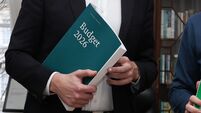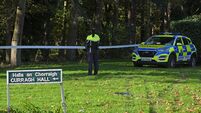Hike in exports good news but not enough
Exports hit a record €161 billion last year, an increase of 6.7%, and look set to hit fresh heights this year with a return of €172.6bn projected by the Irish Exporters’ Association (IEA) for 2011.
While multinationals account for about 75% of the total, the increase bears out the view that this economy has become more competitive.
Buried in the overall figures was a statistic showing that the amount of assets serviced for clients in the International Financial Services Centre rose 8% to €2.48 trillion.
The other bit of good news was the surge in food exports which has been emerging as a ray of light in the economy, as global food demand starts to pick up. This can be built on as many commentators have pointed out.
Driving indigenous industry ahead has to be a key plank of growing this economy in the years ahead.
But there was a negative in the commentary accompanying the export results, where the IEA chief executive, John Whelan, warned that the projection of 7.2% growth for total Irish exports in 2011 “was still well below the rate of growth in exports required to enable targets in the IMF four-year plan to be achieved”.
To hit those targets, Ireland would have to deliver export growth of over 10% in each of the four years.
Those export figures over the four-year period would lead to 300,000 new jobs in the private sector.
However Whelan again warned that without the right kind of supports and incentives being put in place to support such a drive then the jobs target could be out by a third.
One other crucial factor in this jobs growth scenario has to be the banks.
We seem finally to have come to the realisation that the banks, as we knew them, have not been fulfilling their basic role of supporting Irish business and the Irish consumer for quite some time.
Some argue the demand hasn’t been there to warrant much lending in the first instance.
It is clear, however, from the shift in strategy insisted on by the IMF and the EU under the terms of the bailout, that the banks here have to downsize to service Irish industry and the needs of the ordinary consumer only.
Whipping the banks into shape has proved more difficult than first thought.
It’s hard to be believe that it is well over two years since we were first hit with this crisis and we still nave not whipped the banks back into shape to allow them function as normal banks.
In Dublin, yesterday, Central Bank Governor Patrick Honohan said he was looking forward to welcoming new owners of the major banks to Ireland in the near future.
Let’s hope he is right about that, and the banks can get back to playing a constructive role rather than a role in construction, to ensure this economy can develop its true strength and deliver us out of the hands of the IMF.
Work still needs to be done to get to that point and the disturbing prospect of another NAMA-type bank to take charge of non- core assets to be sold off over time is hardly the kind of proposal to inspire confidence. Especially given how long the original plan has taken to separate out the bad loans that destroyed the Irish banks and almost destroyed the Irish economy.
Whatever is done needs doing pretty swiftly and we dare not get it wrong this time. Too much is at stake. Business and consumers need reassurance that we do have a banking system they can depend on.
Above all, they will need to know when the guarantees are withdrawn that their money and business will be in safe hands.












